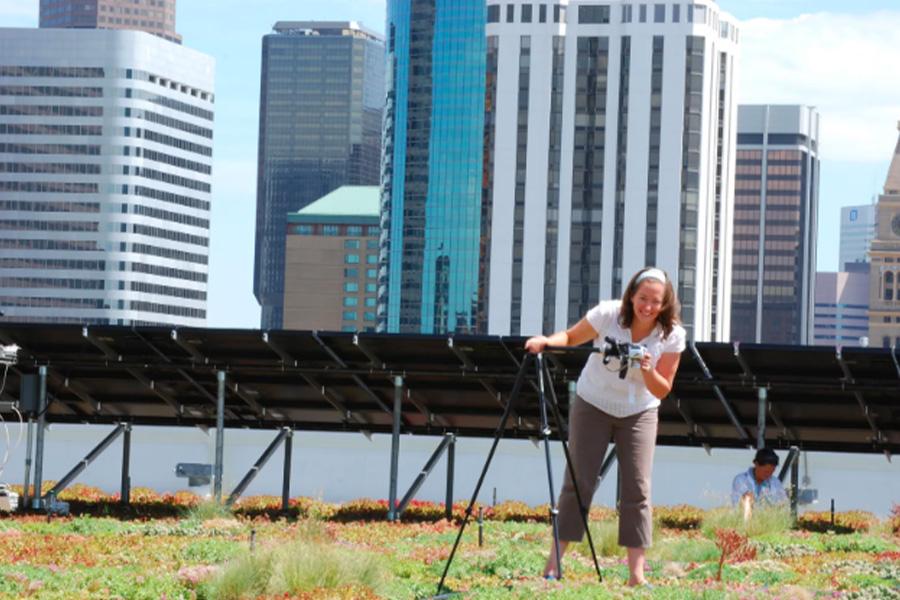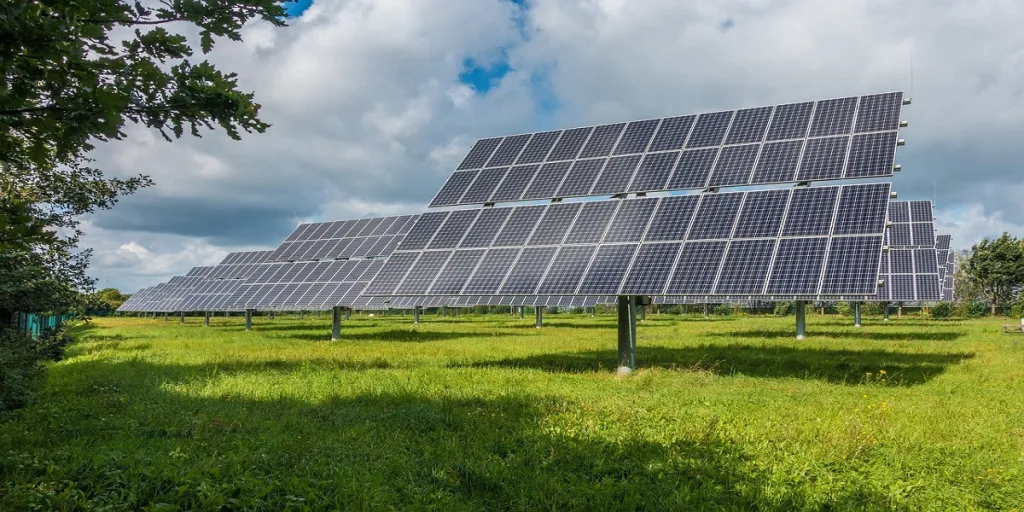2022 has been full of news regarding climate change and the energy crisis, itself a product of climate change (and other elements). Thanks to these two negative events, costs are rising and a need is growing for more natural land filled with more trees. However, with growing global populations to feed, land is increasingly being cleared for agriculture and farming — the Amazon rainforest is a prime example.
The issue of land scarcity for both agriculture and wild landscape, coupled with the need for more renewable energy sources to supply much-needed power, has led to an interesting solution — agrivoltaic farming.
Table of Contents
What is agrivoltaics? An agrivoltaics definition and history
Agrivoltaics disadvantages and benefits
What are the installation options for agrivoltaics?
Are there agrivoltaic grants available?
Conclusion
What is agrivoltaics? An agrivoltaics definition and history
Agrivoltaics, from “agri” for agriculture and “voltaics” for energy production, is the combination of these two elements for mutually beneficial energy and food production in one place.
A simple example of agrivoltaics is putting sheep out to pasture in a field full of solar panels. Here, the sheep benefit from shade (which also helps stop the grass from turning brown too quickly), and the solar farmer benefits by the sheep keeping the grass short for a fraction of the fee for workers with lawnmowers — especially with the rising cost of fuel.
Agrivoltaics first began to take physical shape when Byron Kominek, a hay farmer from Colorado USA, realized that his family farm no longer made enough money to sustain the family. Kominek was also aware of the energy crisis and the push for renewables. He approached the local government and put forward an idea — to rent out his farm to the state for solar panels while keeping the land underneath for farming.
Eventually, with help from researchers at Colorado State University and the National Renewable Energy Lab, Kominek was able to install over 3,000 solar panels, with enough space between each to drive his tractor, and use the land under the solar panels to grow vegetables.
Thanks to the intermittent shade from the solar panels, the water evaporated less, meaning the vegetables benefited and less water was needed. Additionally, the water evaporation that remained helped cool the air around the solar panels by up to 12 degrees, meaning more efficient panels with increased power production.
Kominek’s success meant the saving of his farm and a revolution within the agricultural and renewable energy industries. Today, farming can be combined with windmills, solar, and other clean energy providers. The Global Agrivoltaics Market is projected to grow at a CAGR of around 38% from 2022 to 2027.
Agrivoltaics disadvantages and benefits
Benefits of agrivoltaics
– Maximizes solar energy potential: According to a study, global energy demands could be offset by solar electricity production even if less than 1% of cropland were converted to an agrivoltaic system. This is not only due to the efficiency-enhancing effect of the farmland’s lower water evaporation, but also because of the higher volume of land utilized — as farmed land can simultaneously be used for energy generation.
– Improves soil quality and crop production: The shade provided by the photovoltaic (PV) solar panels means the soil retains more moisture. Barron-Gafford’s research showed water can be retained to the extent that some plants can grow in the Arizona desert. A similar study found that in these conditions, pepper and tomatoes required 50% and 30% less water, respectively, to thrive. The size and positioning of the panels protect the plants from excessive heat and harsh weather, such as strong winds and heavy rainfall — which is increasingly important thanks to climate change. Agrivoltaics, therefore, means healthier soil and higher-yielding crops throughout the year.
– Increases farmer profits: Thanks to the double usage of their land, agrivoltaics means farmers can benefit from double revenue streams, while simultaneously protecting the planet and addressing land scarcity. According to NREL, upwards of 2 million acres of U.S. farmland could move to solar over the next decade — this is very much a growing industry. In addition, the workers in these areas will have more shade, thereby reducing worker injury and overheating.
Disadvantages of agrivoltaics
– High price: The initial capital needed for installing an agrivoltaic system remains very high. In Kominek’s case, he bet his whole family farm on the project.
– Crop rotation: It is required to ensure continued high yields and land health, and consequently (due to water evaporation levels) the productivity of the PV system. This means ensuring different plant types are used over the years. However, on a positive note to this “con,” crop rotation increases flora diversity and means healthier land, which benefits everyone.
– Still in development: Due to the relative newness of agrivoltaics, the ideal methods and crops are still being tested. This means many crop types remain to be tested with this system. In addition, the newness means many farmers are still unaware of its benefits, leading to reduced adoption.
– Additional costs: In addition to the initial investment capital for the PV panels, agrivoltaic companies and farmers face some less-obvious costs. These include maintenance costs, such as replacing panels when they reach a certain age, as well as buying solar batteries and security to protect them from theft. However, despite this being considered one of the agrivoltaics disadvantages, the revenue from the electricity and crop generation should cover these costs.
What are the installation options for agrivoltaics?
Agrivoltaics can be installed in different places — from fields and gardens to sky-scrapers:
– Agrivoltaics farms: They utilize an outdoor farming space, giving a farm double utility. This can mean grazing animals and installing PV panels or wind turbines, or having agricultural plant produce growing under the shade of PV panels. There are now even agrivoltaics sheep companies, such as Solar Sheep, which rent out their sheep to graze in solar fields.
– Agrivoltaics greenhouse: This method covers the glass of greenhouses with solar panels. Still in its developmental stages, Spanish researchers are looking into transparent glass PV panels. The idea, as some light will undoubtedly be lost, is to provide PV systems that reduce the annual net photosynthesis rate by up to 10%, with only a marginal impact on crop yield.
– Rooftop agrivoltaics: Rooftop agrivoltaics will be a game changer for urban farming, as it refers to the installation of solar panels on agricultural rooftop areas. This means more renewable energy generation closer to the end user — meaning less distance to travel. Additionally, it means better use of the space. Using rooftop agrivoltaics, agrivoltaic companies have shown that lettuces grow with larger leaves and consume more carbon. However, it will be some time before all crop yields can be tested.

Are there agrivoltaic grants available?
If you are interested in researching agrivoltaics, forming an agrivoltaic company, or setting up an agrivoltaics greenhouse, agrivoltaics farms, or even rooftop agrivoltaics project, you may find some financial support to get you started.
– Agrivoltaics in the U.S. is going well, with the U.S. Department of Energy (DOE) Solar Energy Technologies Office (SETO) announcing USD 8 million in funding for projects examining how agrivoltaics can scale up and provide new economic opportunities to farmers (agrivoltaic farms), rural communities (rooftop agrivoltaics), and the solar industry.
– The European Commission has a wide range of grants available for developments in agriculture, which agrivoltaic companies can apply for. European countries also individually offer grants, such as Italy’s EUR 1.2 million agrivoltaics grant.
– Australia offers grants for energy efficient solutions — an umbrella under which agrivoltaics falls. In New South Wales, an agricultural high school received AUD 180,000 from the NSW DPI’s Energy Efficiency Solutions Project to help jumpstart its agrivoltaics program. This shows that it can be worth applying for grants from regional as well as national governments.
– Serbia’s Ministry of Agriculture, Forestry and Water Management is offering EUR 38 million for competitive agriculture facilities in the country, including agrivoltaics.
In addition to the above, many other regions are seeing rising interest in agrivoltaics, among them India and Africa. However, despite initial optimism for a rise in agrivoltaics in China, government officials are now considering banning agrivoltaics in farming out of concern for reduced crop yields in a highly-populated country.
Conclusion
Agrivoltaic systems are revolutionizing agriculture and renewable energy generation, with rooftop agrivoltaics creating double usage for highly prized urban space in cities, and agrivoltaic farms and agrivoltaic greenhouses doing the same for the countryside. With multiple studies showing the benefits of this farming method, including higher crop yields, more efficient electricity generation, reduced water consumption, and healthier land, it is clear that agrivoltaic systems should be implemented at a much wider scale than they currently are.
The method is still quite new, however, meaning that research remains to be done on ways to maximize crop yields and electricity generation in a way that is beneficial to the farmer, as well as to the land and animals. Thankfully, as this will be an expensive process, regions such as the U.S. and Europe are leading the way in creating agrivoltaic grants. However, more regions will need to join if improvements are to be made at a fast enough rate to tackle climate change and the energy crisis.




